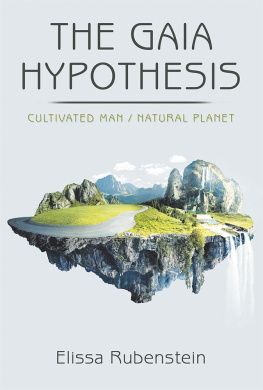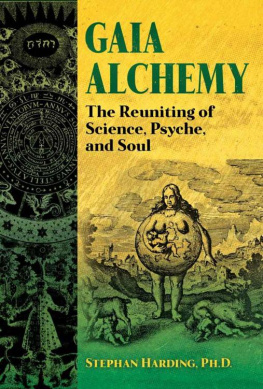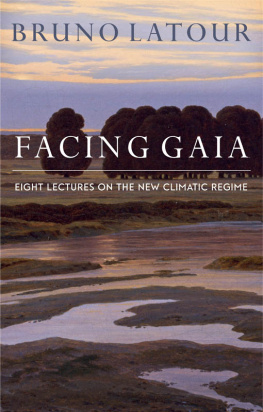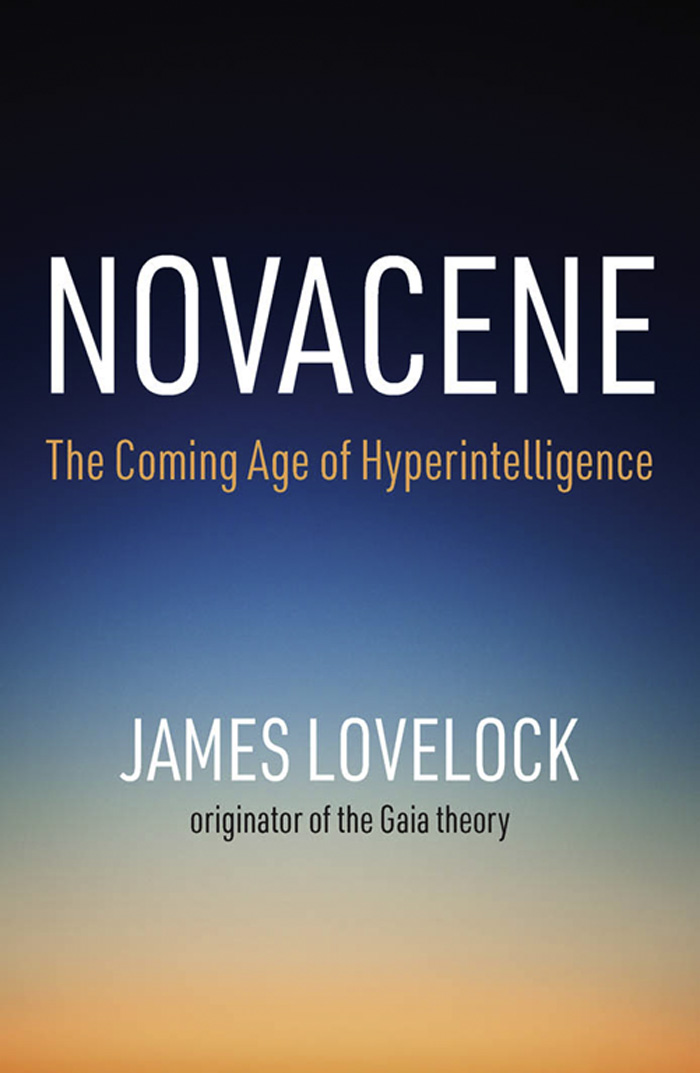Table of Contents
Guide
Novacene
The Coming Age of Hyperintelligence
JAMES LOVELOCK
with Bryan Appleyard
The MIT Press
Cambridge, Massachussetts
London, England
Text James Lovelock and Bryan Appleyard, 2019
Original edition first published by Penguin Books Ltd., London, 2019
All rights reserved. No part of this book may be reproduced in any form or by any electronic or mechanical means (including photocopying, recording, or information storage and retrieval) without permission in writing from the publisher. The author has asserted his moral rights. The editor has asserted his moral rights.
This book was set in Garamond MT Std by Jouve (UK), Milton Keynes. Printed and bound in the United States of America.
Library of Congress Control Number: 2019943101
ISBN: 978-0-262-04364-9
10987654321
We live in an old chaos of the sun.
Wallace Stevens
Preface
It is a great honour to have helped James Lovelock finish what will probably be his last book. I say probably because experience has taught me never to guess what Jim will do next. Though he is now a very old man, a quiet retirement seems the least likely prospect, but he is toying with the idea, as he admitted in an email.
Now that I am approaching 100 years it is easy to believe that I have little more to contribute. Like running a marathon, I know the agony of running that last hill that faces me. I might as well stop trying and let the young runners complete the course.
I laughed when I read this; first, because I find it hard to imagine any young runner replacing Jim and, secondly, because I did not believe him. The truth is there could always be another book, just as there are always new ideas, new ways of looking, new ways of thinking. While working with him on this book, I actually had to ask him to stop thinking and start explaining, otherwise the task would never have been completed.
Jim's imagination is as thrillingly unexpected as it is alarmingly incisive. I once saw him sitting silently at a dinner party full of very bright, very serious people and then stun them into silence with a single sentence that overturned everything they had just been talking about. And he always grows suspicious when he finds people agreeing with him What have we got wrong? he asks. He constantly looks for refutations and for different perspectives and he insists on the inherent uncertainty of scientific ideas. This makes his own ideas very robust indeed; they have been tested to destruction so many times. It is, of course, how all scientists should think and work, but many don't, which is why, in recent years, Jim has taken to calling himself an engineer.
He can be bewildering on first contact. I first met him many years ago at his laboratory in Coombe Mill. I just didn't understand him and I remember thinking I had fallen through a looking glass into a world utterly different from the one I thought I knew. He told me about his Gaia hypothesis, but I did not grasp the idea, perhaps because, as he says in this new book, it is not expressible in ordinary logical forms. This is not because it is complex though, in detail, it is but because at its core is a pristine simplicity. Life and the Earth are an interacting whole and the planet can be seen as a single organism; there you have it. Once I understood this it seemed so blindingly obvious that I assumed nobody could possibly disagree. In fact, back then, everybody did. Some still do, and some are Gaians but pretend they aren't, but most now acknowledge that Jim has altered forever our understanding of our lives and our planet.
People often talk of the value of thinking outside the box, but they seldom mention the much greater value of thinking, as Jim does, as if there is no box. He is so widely qualified primarily in medical science and chemistry, but, seemingly, in everything once he starts talking that no one discipline can ever hope to contain him. He is, as far as the institution of science is concerned, an outsider, a maverick, but that has not stopped him being garlanded with awards and honours. His nomination for the Fellowship of the Royal Society listed his work on the transmission of respiratory infections, air sterilization, blood-clotting, the freezing of living cells, artificial insemination, gas chromatography, and so on.
That was in 1974 and only briefly mentioned is the discipline that made him famous: climate science and his associated work on the possibility of extraterrestrial life. Then there is his ability to invent and construct his own gadgets notably the revolutionary electron capture detector, maybe even the microwave oven and the numerous secret gadgets he created while working for the intelligence service.
Now, forty years after he introduced us to his goddess in his book Gaia: A New Look at Life on Earth, he introduces us to a new idea just as astounding and just as radical. Novacene is Jim's name for a new geological epoch of the planet, an age that succeeds the Anthropocene, which began in 1712 and is already coming to a close. That age was defined by the ways in which humans had attained the ability to alter the geology and ecosystems of the entire planet. The Novacene which Jim suggests may have already begun is when our technology moves beyond our control, generating intelligences far greater and, crucially, much faster than our own. How this happens and what it means for us are the story of this book.
This is not the violent machine takeover seen in many science-fiction books and films. Rather, humans and machines will be united because both will be needed to sustain Gaia, the Earth as a living planet. As Jim put it to me in an email, The important concept, as I see it, is life itself. Perhaps this explains why I see the Earth as a form of life. The nature of its individual components, so long as they share a common purpose, seems unimportant. Embodied in the concept of life is the possibility of knowledge, of creatures that can observe and reflect upon the nature of the cosmos. Whether humans continue living with or are superseded by their electronic progeny, we shall have played a vital and necessary part in the process of cosmic self-knowledge.
Jim is no anthropocentrist. He does not see humans as supreme beings, the summit and centre of creation. This was implicit in the idea of Gaia, which made it clear, to those who understood, that the biosphere has its own values of survival that lie far above and beyond any humanist values. It is explicit here: if life and knowing is to become entirely electronic, so be it; we played our part and newer, younger actors are already appearing on the stage.
Finally, a note on Jim's use of certain words. He uses cosmos rather than universe because he takes the former to mean everything we can know or see; he sees universe as potentially meaning something larger of which we know and can know nothing. He uses cyborgs to mean the intelligent electronic beings of the Novacene. In common usage this is taken to mean entities that are part flesh, part machine. But Jim thinks his usage is justified because his cyborgs will be products of Darwinian selection, and this they share with organic life. That will be all we share with the cyborgs; we may be their parents but they will not be our children.
Jim ended one of his recent emails with an apologetic, rhetorical sigh That seems more than enough for now. Enough for then, maybe, but not enough for James Lovelock for whom and from whom there will always be more.
Bryan Appleyard, 1 January 2019
PART ONE
The Knowing Cosmos







